The following faculty were awarded funding for the 2014-2015 academic year. Below is a short abstract of the research funded through the EPAP program.
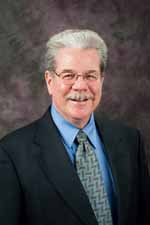
Warren White, associate professor of mechanical and nuclear engineering
Wind Turbine and Grid Interaction: Modeling, Stability, and Control
This work investigates the wind turbine and grid interconnection. The occurrence of subsynchronous resonance involving a wind turbine and transmission line located on the Texas grid has motivated recent interest into the cause and mitigation of the phenomenon. The research into this occurrence has largely involved modeling and analysis of the interconnection. Most of these investigations involve circuit analysis of turbine – transmission line models. One analysis has represented a full converter turbine – transmission line connection using NREL’s FAST software for turbine modeling. This analysis using FAST did not involve a doubly fed induction generator (DFIG) which behave differently than the full converter units. The Texas grid turbine mentioned previously used a DFIG. Mitigation methods based on static model parameters cannot compensate for grid evolution or equipment aging.


Caterina Scoglio, professor of electrical and computer engineering
Don Gruenbacher, associate professor of electrical and computer engineering
Secure and Reliable OpenFlow Networks for Smart Grids
The Smart Grid concept includes the application of advanced computer, communications, and power technologies to obtain a highly automated, responsive, and resilient, transmission and distribution infrastructure. This project addresses some key issues to allow experimentation and analysis of smart grid networking solutions in the real-world environment and on the national scale incorporating networking resources from the Smart Grid Lab at K-State, and the GENI (Global Environment for Network Innovations) testbed. The most important requirements for Smart Grid communications concern 1) quality of service, 2) robustness with respect to failures and attacks, 3) cybersecurity, and 4) scalibility.

Behrooz Mirafzal, assistant professor in electrical and computer engineering
A New Class of Direct-drive Wind Turbines
The objective of this project is to improve the robustness and reliability of wind turbines through developing a novel direct-drive structure. The proposed wind energy conversion system introduces a three-phase single-stage boost inverter as the power converter in place of the commonly used voltage source inverter. This novel power converter transfers power from a low dc voltage to a much higher three-phase ac voltage. The introduction of such power converter allows the PM generator in a direct-drive turbine to produce a lower voltage, thereby adding flexibility to the generator design process, hence allowing designers to be more innovative and potentially allowing direct-drive wind turbines to use cheaper, more efficient generators. This system improves upon the existing system by removing the most failure prone components, namely the electrolytic capacitors and gearbox, making it more reliable and robust.

Melanie Derby, assistant professor in mechanical and nuclear engineering
Three-pronged approach: Enhancing condensation, mentoring, and educating students
The majority of traditional fossil fuel and nuclear thermal cycles utilize steam as a working fluid. Increases in condensation heat transfer coefficients would result in smaller, more compact, and less expensive condensers for power plant applications. Additionally, advances in steam- and air-side heat transfer may enable increased usage of air-cooled condensers, therefore reducing power plant cooling water usage. In preliminary work by the author, steam condensation heat transfer coefficients in hydrophobic mini-channels has been shown to be approximately an order of magnitude higher than those in hydrophilic mini-channels, such as those found in current condensers. In this work, simultaneous flow visualization and subsequent image processing will be employed in order to develop water droplet growth and removal models, resulting in a better understanding of condensation mechanisms and coating wear.
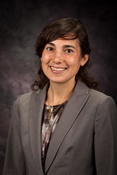
Trisha Moore, assistant professor in biological and agricultural engineering
Carbon flux and storage in wetlands for the treatment of flue gas desulfurization effluents
Constructed wetland treatment systems (CWTS) have been identified as a potentially cost-effective technology for removing pollutants from flue gas desulfurization (FGD) effluent, the liquid waste stream resulting from air pollution control systems designed to remove sulfate and other trace elements from coal-fired power plant stack emissions. An additional co-benefit of these CWTS systems is greenhouse gas sequestration, which is hypothesized to be enhanced through suppression of methane production by the microbial community due to the elevated sulfate concentrations characteristic of FGD effluent. The objective of this project is to quantify the potential net greenhouse carbon balance (e.g., carbon dioxide sequestration less methane emissions) for a CWTS treating effluent from the flue gas desulfurization process.
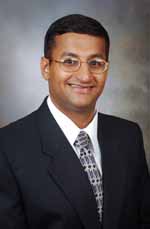
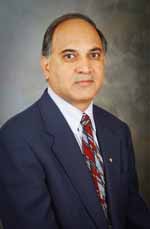
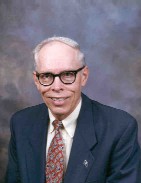
Bala Natarajan, professor of electrical and computer engineering
Anil Pahwa, professor and Logan-Fetterhoof Electrical and Computer Engineering Faculty of Distinction Chair
Larry Erickson, professor of chemical engineering
Coordinated EV Charging from a Techno-Economic Perspective
Thanks to their environmental, social and economic benefits, electric vehicles (EVs) are expected to become a major component of the power grid. Studies have illustrated the inability of the current distribution system to accommodate a high penetration of EVs. The question that we seek to address in this research effort is the following - how can we manage/control in a coordinated manner both EV charging as well as non-EV loads, renewable energy based distributed generators to best maintain grid stability and reliability while maximizing the payoffs for the stakeholders? Specifically, the control theoretic approach developed as part of our earlier work that considers both technical and economic objectives will be extended to account for adaptive location dependent pricing structure and fairness in charging rates and payoffs. The results and findings from our work will help grid operators to evaluate and plan future investments related to both EV charging stations as well as distributed generation.
